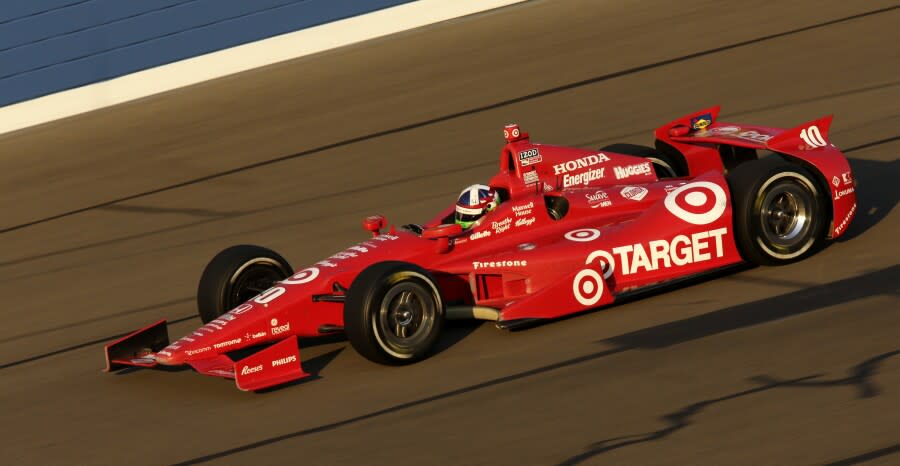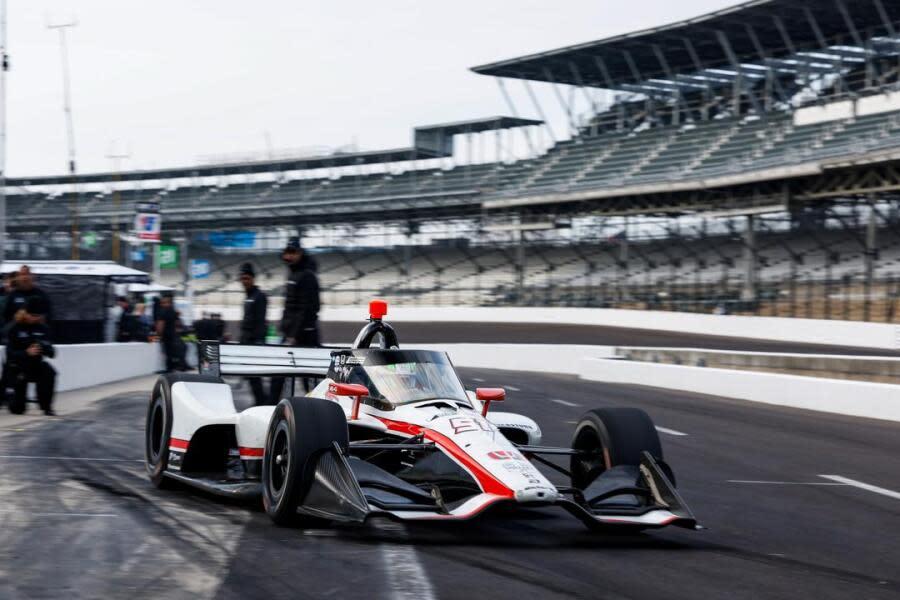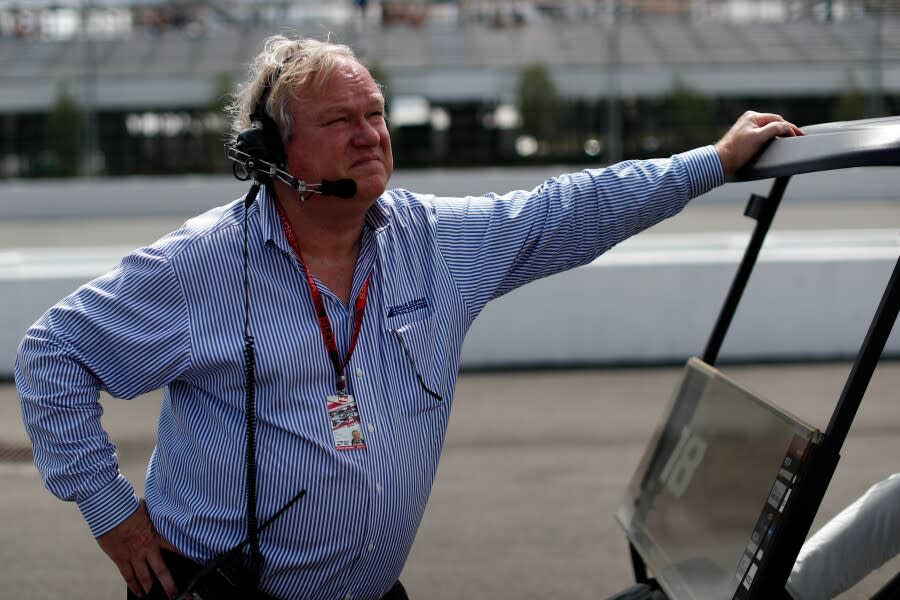IndyCar team owner Dale Coyne believes a new car is essential for the series
INDIANAPOLIS – It was a rainy day at the Indianapolis Motor Speedway, but IndyCar Series team owner Dale Coyne was discussing what IndyCar needs for a brighter future.
It starts with a new car.
“I, for one, think we need a new car,” Coyne, who fields perhaps the smallest team in IndyCar based on operating budget, told NBCSports.com. “Coming from a team with a smaller budget that might be a surprise, but I think we need a newer car.
“But it's got to be designed by the right person, not designed by a committee. It has to be the best-looking car in the world, the best sounding car in the world, be the best racing car in the world.”
Because of IndyCar’s current rules, it has created an economic model that has fueled growth in terms of number of entries on the grid and deep competition.
A small two-car team such as Dale Coyne Racing can take on the giants such as Team Penske, Chip Ganassi Racing, Arrow McLaren, Andretti Global and Rahal Letterman Lanigan Racing and beat them to the checkered flag.
That has happened six times in Dale Coyne Racing’s IndyCar career as the team has beaten the best to win an IndyCar Series race.

Currently, IndyCar is using the same basic Dallara that went into competition beginning in 2012.
Of course, there have been some major changes to that car including different aerodynamic packages and, beginning in 2020, a protective aeroscreen that has greatly improved driver cockpit safety.
There have also been other more subtle changes to the rules and regulations that aren’t always obvious to see from the grandstands or on television.
Later this season, perhaps as early as the Honda Indy 200 at Mid-Ohio on July 7, the Hybrid Assist Unit will make its competitive debut, adding another technological element to a form of racing that could use an update.
“We used to buy a new car every year and we'd spend $400,000 for a new car every year,” Coyne said. “We're going to spend $1 million dollars a car this year to upgrade this 12-year-old car. The hybrid system all in when you're all done is going to cost $1 million dollars an entry to do.
“It's not that we're cheap and we don't want to spend the money. Could we spend it smarter and wiser? I think we could.
“We're spending the money, that's for sure.”
Despite the additional $1 million per car, Coyne supports the move to hybrid technology because it is important to Honda and Chevrolet, the two engine suppliers in IndyCar.
“I think it's necessary for the manufacturers,” Coyne explained to NBCSports.com. “It's funny, I bought a Honda Accord hybrid a couple years ago, and I was naive. I got home. I said, ‘Where's the plug-in?’
“Well, there's no plug-in. Okay. It just regenerates itself.
“I said, ‘This is really, this is what cars should be.’ You don't want to screw up the power grid and save green power by having electric, but then having all these coal-fired electric plants to make the electricity for it. That's just a net gain of zero, it appears to me.
“But to regenerate it yourself and do all that and go from a 24-mile per gallon car to a 50-mile per gallon car, that should happen as fast as it can.
“That's why I think this is good. It's a small step because again, we're adding it to an existing car, so you don't have the room to put the things in there that you want.
“It's a small hybrid system. It's heavy. It's small in capacity, so it's not going to give you the power that we wish we had.
“I think Formula One, there's supposed to be 50 percent hybrid power coming up in the future. That's a tough number to hit.”

From a broader point of view, Coyne believes the combination of hybrid technology with an internal combustion engine helps reduce greenhouse emissions and makes much more sense than a complete move to electrification.
Hybrid engines reduce pollution because less fossil fuel is being burned. With electrification, power still has to be produced by a powerplant that is often fueled by another fossil fuel – coal.
Also, the ability to dispose of lithium batteries safely is a major consideration.
“In this country, I'm trying to think, I remember it was like 20 or 30 years before we'd approved a nuclear plant,” Coyne said. “France, they put them up every week, it seems like, over there.
“Nuclear power has gotten safer and safer. The waste from a nuclear plant is a problem but not as bad as the air from a coal fire electric plant so we just need to be thinking smart, we need to be thinking ahead.
“Who knows what is going to happen with hydrogen? If people put the real resources behind hydrogen, I think that could be the fuel of the future.
“And electric, the battery is going to get four times better than they are now. That could come back. As they are today, I think they're nice, but I think we all saw the films, the cars in Chicago during the Winter, when it was cold that day, people were pushing their Tesla’s up to a charging station.
“It's got flaws. You can't just think today, you've got to think forward. Can battery technology get better? I'm sure it can. Can hydrogen figure out how to make a hydrogen generator that works? I would hope they could.
“Those are all out in the future.”
For Coyne, a long -time team owner in the NTT IndyCar Series, it wasn't that long ago where the starting fields might have been 18, 19, 20 cars. With the addition of Prema Racing in 2025, the series is potentially up to 29 cars.
That is more cars than in the glory days of CART in the 1990s when full fields used to be 28 cars.

“The field growth is good,” Coyne said. “I wish the series was growing a little stronger than it is. I wish we had some better races.
“I think we've got to work on everything. We've got to work on promotions. We've got to work on race events. We've got to work on teams. We've got to work on drivers. Everything.
“People want to see good competition on a race track, good competition on a basketball court. That that will help your ratings. I think we do have good ratings. We know that one guy is not going to win every race here, which you really can't say that about Formula One. You can put your money on one guy, and you're probably going to win every weekend.
“But here, anybody can win. And I think we need to keep that going and have good, tight racing. And I think if you do the right steps, that can happen.”
Coyne is also a major believer in IndyCar adopting a Charter System, as he told NBCSports.com in post on April 18.
Coyne has been involved with the Indianapolis 500 for nearly 50 years. The Indy 500 is back being a can't miss sporting event. Last year’s race drew 330,000 fans, according to Indianapolis Motor Speedway owner Roger Penske.
At the first of May, ticket sales are 15 percent higher at this time than they were last year, which means close to 350,000 may attend the 108thIndianapolis 500 on May 26, 2024.
“It’s great,” Coyne said. “Everybody who comes here every year they come to this place they come through the gates and the and it's just different. It's a different feeling for spectators, it's a different feeling for the competitors.
“It's our Super Bowl for sure.
“And it's the biggest race in the world.”

